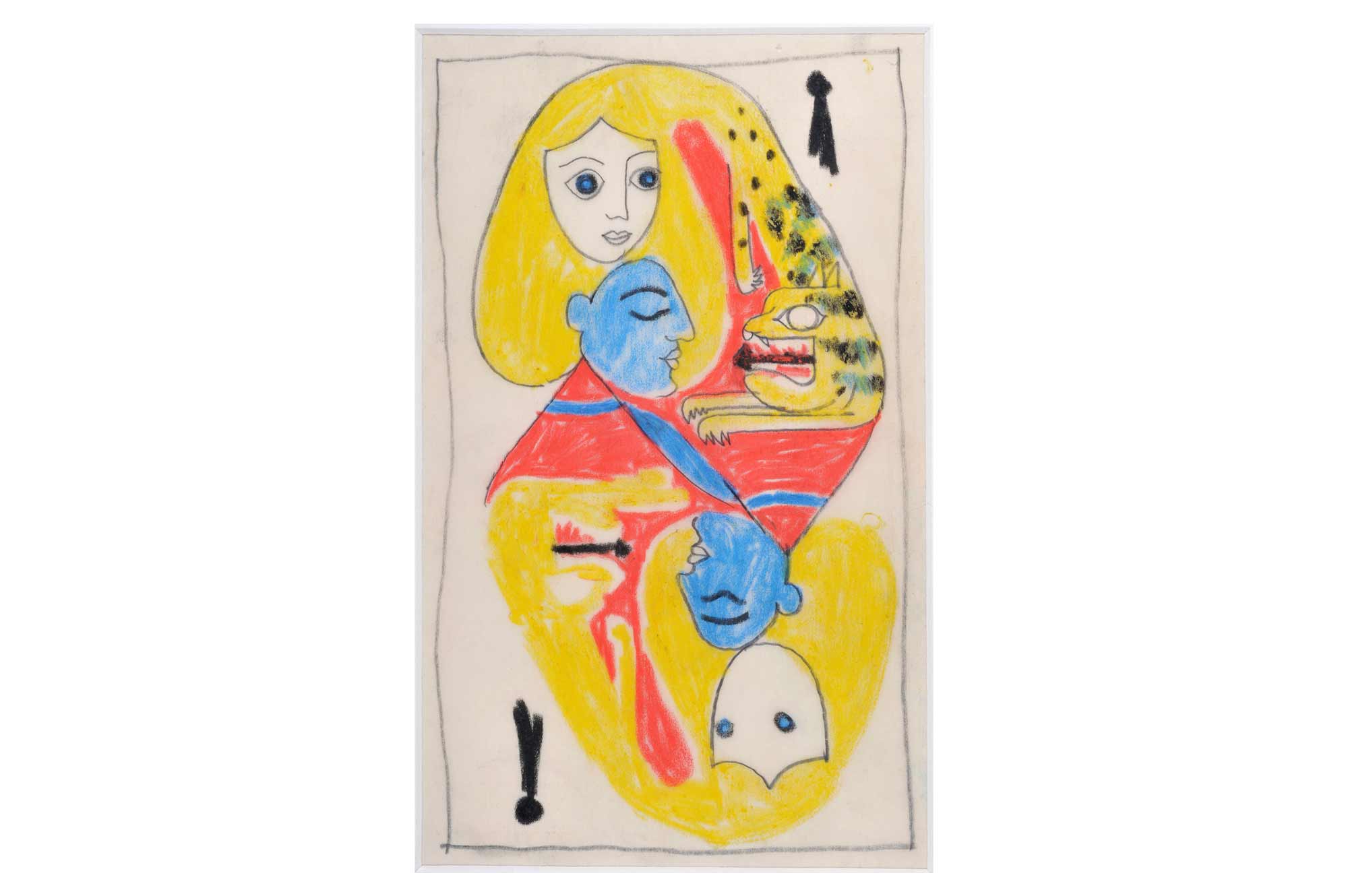Victor Brauner’s (1903 – 1966, RO) search for the invisible world renders his oeuvre unique and his journey atypical. His relationship with the cosmos alludes to a prophetic experience that was to be a guiding principle in his life and work. As soon as he joined the Surrealists in 1932, the exploration of the unconscious occupied a major place in his work – the dream becoming a means of action, a means of transforming people and the world. In 1938, a strange accident left him in a unique position, exemplary of Surrealism’s links to the strange and to spiritualism: he lost his left eye in a brawl. Prior to this unusual event, he used to obsessively paint pictures that revolved around the theme of a severed eye, such as his Self-Portrait with Plucked Eye from 1931, which was, to say the least, premonitory. The importance of divination and prophecy in his creative process brought him closer to ancient civilisations, whose symbolic and formal vocabularies he used as a source of inspirations for new figures and signs, recalling astrological configurations and other geomantic signs.
Jeu de Marseille
Among the many works by the artists and writers gathered at Villa Air-Bel, the most outstanding is certainly the Jeu de Marseille – a nod to the famous ‘Tarots de Marseille’, which André Breton was studying at the time. The Surrealists reinvented the iconography of a classical deck of cards in terms of the movement’s favourite figures and symbols. The suits became became the flame of Love (represented by Baudelaire, Stendhal’s Portuguese nun, Novalis), the black star of the Dream (Lautréamont, Lewis Carroll’s Alice, Sigmund Freud), the bloody wheel of the Revolution (Marquis de Sade, Lamiel, Pancho Villa) and the lock of Knowledge (Hegel, Hélène Smith, Paracelsus). A random draw determined who would design the different cards: Victor Brauner (Hegel and Hélène Smith), André Breton (Paracelsus and the Ace of Knowledge), Jacques Hérold (Lamiel and Sade), André Masson (La Religieuse portugaise and Novalis), Max Ernst (Pancho Villa and the Ace of Love), Jacqueline Lamba (Ace of Revolution and Baudelaire), Wifredo Lam (Alice and Lautréamont) and Oscar Dominguez (Freud and the Ace of Dream). The joker was based on Alfred Jarry’s drawing of Father Ubu, while Frédéric Delanglade designed the backs of the cards. Frédéric Delanglade was then tasked with standardising the sketches by redrawing them in a continuous line. In 1943, they were published for the first time in New York in the third issue of Revue WW and then edited in 1983 by André Dimanche.









 Victor Brauner, Hélène Smith. Sirène de Connaissance - Serrure, 1941, Collection Musée Cantini, Marseille
Victor Brauner, Hélène Smith. Sirène de Connaissance - Serrure, 1941, Collection Musée Cantini, Marseille